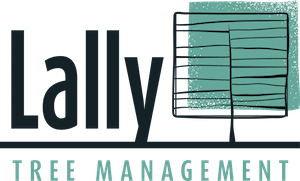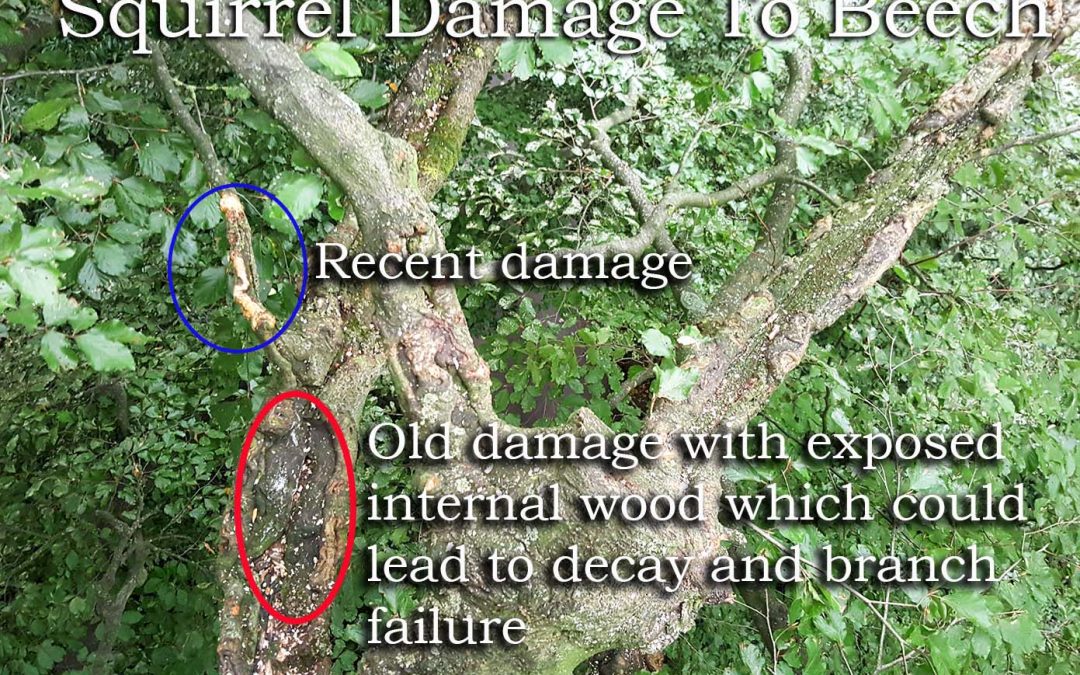Squirrels, particularly the invasive grey squirrel (Sciurus carolinensis), are a notable cause of damage to trees in the UK. Introduced from North America in the late 19th century, grey squirrels have proliferated, often to the detriment of both native wildlife and tree health. The UK Government advises that the cost of Squirrel damage is estimated to be at least £37m a year in lost timber value, reduced carbon capture, damage mitigation and replacement trees. So how can you spot this damage and what can you do about it if it’s happening to trees on your land?
Types of Damage Caused by Squirrels
Grey squirrels cause significant damage to trees primarily through their bark-stripping behaviour. They strip bark to access the nutritious sap and inner bark layers, especially during periods of low food availability. This behaviour is most prevalent in the spring and summer months. Bark stripping can lead to several detrimental effects on trees:
1. Exposure to Disease: Stripping the bark exposes the underlying wood, making trees more susceptible to fungal infections and diseases such as Phytophthora, which can lead to tree decline and death.
2. Structural Weakening: Removal of bark can weaken can dry out the underlying wood making the wood more easily accessible to decay fungi, this can affect the structural integrity of trees, making them more prone to breakage and windthrow, particularly during storms.
3. Growth Inhibition: Damage to the cambium layer, where growth occurs, can inhibit the tree’s ability to transport nutrients and water, stunting growth or causing dieback of branches and limbs.
Affected Tree Species
Grey squirrels are not selective and can damage a wide range of tree species. However, they particularly affect broadleaved trees such as beech, oak, sycamore, sweet chestnut, and birch. Young trees and saplings are especially vulnerable, as severe bark stripping can girdle the tree, leading to its death.
How to Spot Squirrel Damage
This government visual guide on spotting Squirrel and Deer damage on trees advises to check for stripped bark making a note of where the height of the damage is, and look for teeth marks as well as any ground marks from animals like tracks or traces of nut shells.
Management and Control
Efforts to manage and mitigate squirrel damage include:
1. Population Control: Managing grey squirrel populations through trapping and culling can help reduce the extent of damage. However, this is often contentious and requires careful consideration of ethical and ecological factors. A Pest Control expert will be able to advise.
2. Tree Guards: Installing tree guards around the trunks of young and valuable trees can physically prevent squirrels from accessing the bark.
3. Habitat Management: Encouraging the presence of natural predators, such as birds of prey, can help keep squirrel populations in check. Additionally, maintaining a diverse habitat can support a more balanced ecosystem less dominated by grey squirrels.
Ongoing research
Squirrel damage, primarily from grey squirrels, poses a significant threat to tree health in the UK. Effective management requires a combination of strategies, including population control, protective measures, and habitat management. Ongoing research and monitoring are crucial to developing sustainable solutions to mitigate the impact of squirrels on the UK’s tree populations.
If you think your trees might be affected by Squirrel damage, it may be worth speaking to a tree expert who can help you decide what to do going forward.

